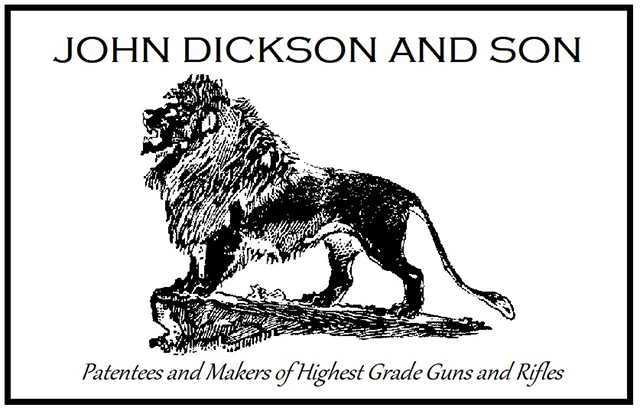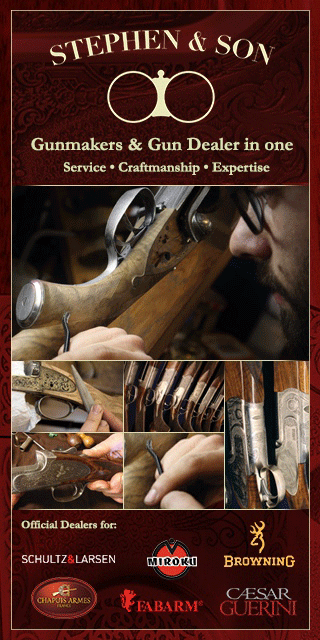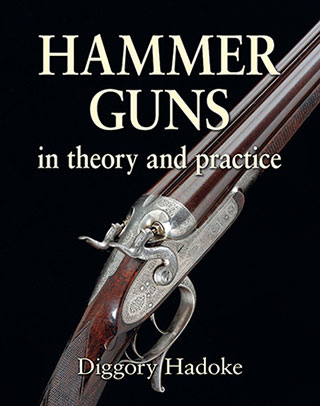The concept of an ‘Express Rifle’ can best be described as the quest for a rifle delivering a medium-to-heavy bullet as directly to its target as possible, delivering devastating energy upon impact and getting from point A to point B as straight and as flat as possible.
The notion of this kind of performance has long been with sportsmen and gunmakers. Attempts to perfect the concept can be divided into three eras: The percussion era, when muzzle loading placed certain constraints on rifling and bullet size relative to the bore, as well as favouring or hindering certain types of rifling.
Second, the Breech-Loading Era, in which the ability to load the cartridge into a chamber, without having to negotiate two feet of rifled barrel to seat the bullet.
Finally, the Smokeless Era, in which the limitations of black powder were overcome and the power of nitro-cellulose powders transformed the characteristics of express rifles, generally making them smaller in calibre.
We encounter the term in its abbreviated form today, when perusing ammunition lists or auction catalogues. A bullet may be listed as .450NE (Nitro Express) or a rifle as a .577 BPE. (Black Powder Express).

Muzzle Loading Express Rifles
Pushing a lead ball or conical bullet down a rifled barrel provides greater stability (and therefore greater accuracy) than pushing one down a smooth bore. The lands of the rifling grip the bullet and impart spin.
However, if the bullet is pushed too hard by a large powder charge, the soft lead is simply stripped by the rifling and the benefit lost. Experiments with rifling included the depth of the grooves, the number of grooves and the twist rate. Experiments with bullets included varying the hardness of the lead (or alloy), altering the shape and length bullets and even casting them to fit the grooves in the rifling. Today, we think of bullets as smooth-sided projectiles but in the mid 19th century they took many forms.
John Dickson of Edinburgh was a pioneer of the express concept and achieved impressive results. He built two-groove rifles in the 1840s, which were, in actuality, the precursor to ‘express rifles’ even if they were not called that at the time.
Dickson’s rifles were given two deep grooves, with a twist of one quarter in thirty inches. The bullets were of cast lead and roughly the shape of a pear, with raised protrusions corresponding with the grooves in the bore.
The bullets had to be rammed carefully down the barrel to seat correctly, making loading a relatively slow process but once correctly seated, the benefits were obvious to a sporting or target shooter.
Dickson two groove rifles were made both as single-barrel and double barrel types and in bore sizes from 11-bore to 70-bore.
it was not until the 1850s that the term ‘express’ was used to describe a rifle
However, it was not until the 1850s that the term ‘express’ was used to describe a rifle and the coiner of the phrase was not John Dickson, but James Purdey, the second of his name, (to borrow a Game of Thrones line).
Purdey’s two-groove rifle had a twist rate of just one turn in six feet. Purdey used a conical bullet with protruding ‘wings’, which fitted the two broad grooves which formed the rifling.
Because the wings fitted neatly into the broad grooves and did not strip, even when propelled by heavy charges, the result was a long point blank range, flat trajectory and a high bullet speed for weight ratio.
Purdey likened it to an ‘express train’ because it went straight and fast to its destination. After Purdey built their first ‘Express Rifle’ in 1851, the term gained traction and became universal.
Black Powder Express Rifles
Leap forward in time and percussion gives way to breech-loading. When it does (officially with the introduction of pin-fire in 1851 but practically not until the mid 1860s, when breech-loaders finally won the argument and production of muzzle-loaders fell off significantly) express rifles moved into their next phase of development.
The Black Powder Express class of cartridges for rifles is legion and starts with fairly small bullets of around .360, moving through .400 to ,450, .500 and, finally, .577. A number of gun makers developed proprietary chamberings in these calibres, designed to deliver the attributes of flat trajectory, high-velocity and long point-blank range.

This was especially advantageous for users of double rifles, which were often used in cover, where a rapid, shotgun-like mount brought the rifle to the shoulder for a quickly-taken shot at a moving, or fleetingly seen, quarry; one which was often dangerous. The hunter wanted to be able to look at his target, engage it and kill it without the necessity for adjusting sights or allowing for range and bullet drop.
Black powder express rifles in the calibres described above, one must remember, were primarily suited to the hunting of medium game
Black powder express rifles in the calibres described above, one must remember, were primarily suited to the hunting of medium game like red deer and sambar, and soft-skinned dangerous game like tigers and bears, though the larger ones were often employed against heavier animals.

Black powder express rifles were most effective at ranges of up to about 250 yards. Compare a black powder express .500 with an 8-bore rifle. The former fired a 380 grain bullet at just over 1,600 fps and penetrated 19 boards at 40 yards (according to the 1883 Field Trials). The latter threw an 875 grain ball at around 1,400 fps and penetrated the same number of boards. However, the double eight weighed 13 1/2lbs, with the .500 weighing just 9lbs.
Nitro Express Rifles
When smokeless powders, with their increased power to move a bullet at speed, became available, everything changed. The real game changer was Cordite, which arrived in the late 1880s and revolutionised the nature of sporting rifles; express rifles included.
Suddenly, instead of muzzle velocities of between 1,400 and 1,600 fps, new .500 and .450 rifles could now achieve between 1,900 and 2,150 fps with bullets from 350 grains to 570 grains in weight. The difference in performance made obsolete the old bore rifles and calibres once considered best suited to deer, like .450 became dangerous game killers.

A good indication of the performance improvement cordite provided is the .577 Magnum Express (Black Powder) rifle, one of the most powerful BPE cartridges ever devised. It threw a 502 grain conical bullet at 1,530 fps from a double rifle, while the .500 Nitro Express, loaded with Cordite and a heavier, .570 grain bullet managed 2,150 fps. The energy delivery difference between the two is huge.
Today, if you order a new rifle from Westley Richards or Holland & Holland for the purpose of hunting elephant or buffalo, it will be a Nitro Express in .470, .500 or .577. The developmental lineage of that rifle can be traced right back to the 1840s.

Published by Vintage Guns Ltd on



